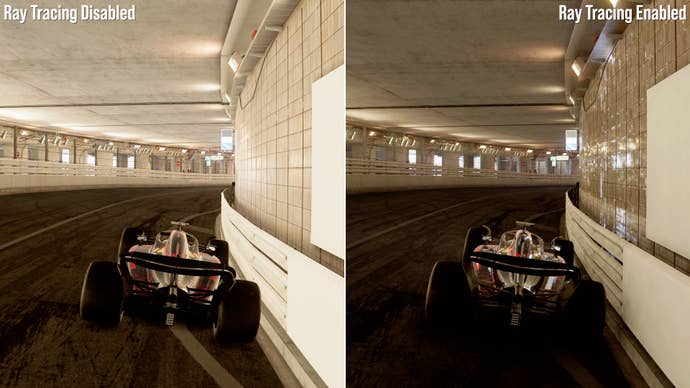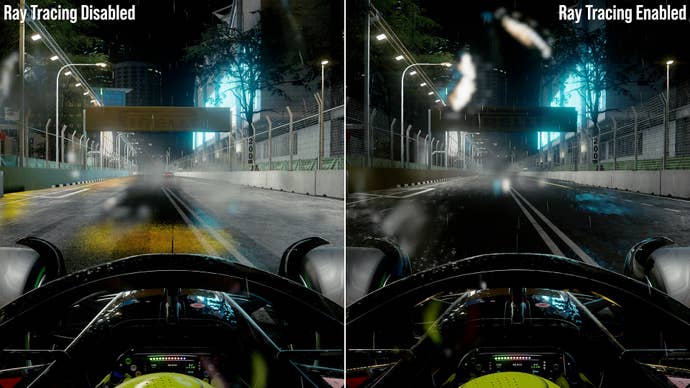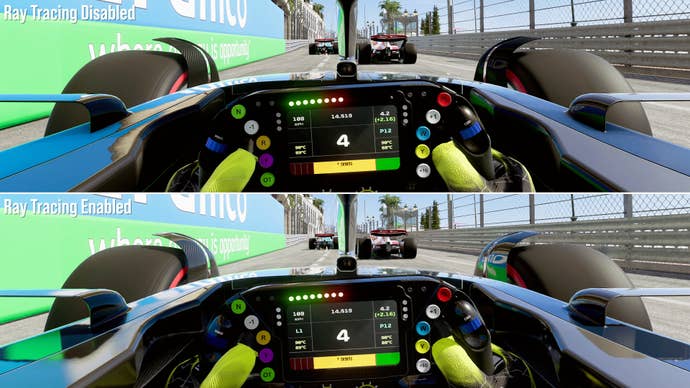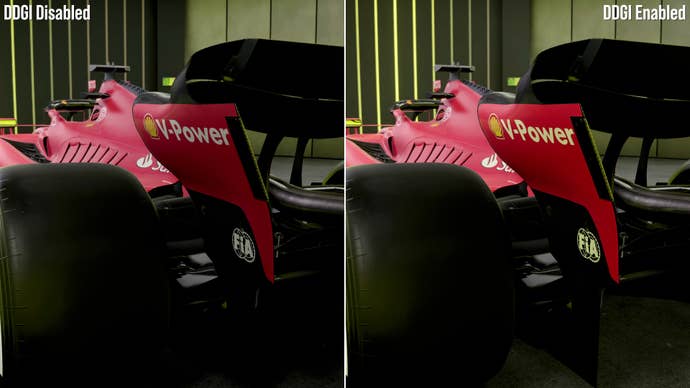Xbox Series X/S, PS5 and PC tested.
Let’s get to the basics first.
Interestingly, the game’s many RT features are only active during menu sequences, pre-race buildup and replays.
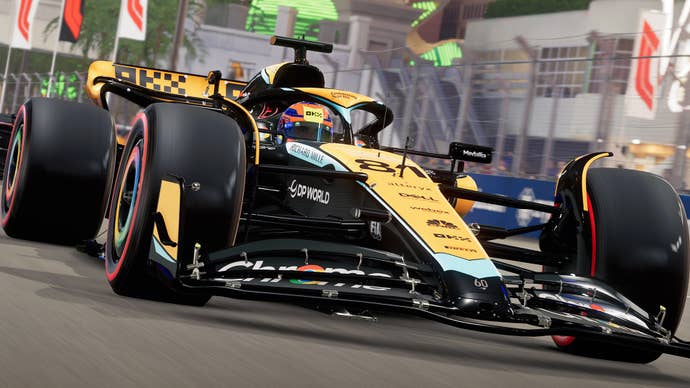
Performance in F1 23 is a curious point.
Here, we spotted frame-rates around 30-40fps on all consoles, with screen tearing evident all across the frame.
The frame-rate even drops below 30fps as the drivers are shown in the podium ceremony.

None of this harms gameplay of course, but it’s an interesting insight none the less.
There’s also a 120Hz performance mode, which appears only on PS5 and Series X.
This drops the target resolution to 1440p, with the internal resolution dropping down to 720p at worst.

The pre- and post-race sequences still engage RT in this mode, with performance dropping to the 40-50fps range.
In the here and now, the only route to RT during gameplay is on PC.
It’s all factored in, and even distorts based on the pattern of the tiling.
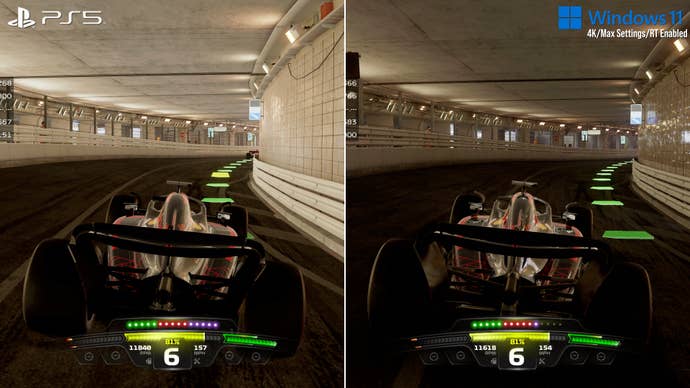
Regular SSR still does a respectable job, but the coverage isn’t complete.
The impact of ray traced reflections isn’t always obvious.
Case in point is a night-time race with weather set to heavy rainfall.
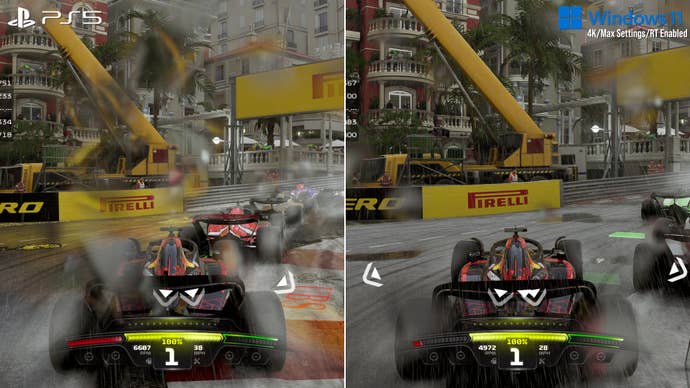
You’d expect this to be a perfect showcase for reflections, but this depends on the technique used.
RT solves this, with colour and brightness perfectly in line.
This isn’t an essential detail, or as obvious as reflections, but it’s a nice extra.

The impact is quite subtle in my experience, perhaps being most obvious in menus and vehicle showrooms.
It works, but in gameplay it doesn’t provide a huge impact.
